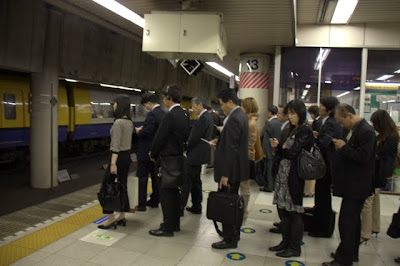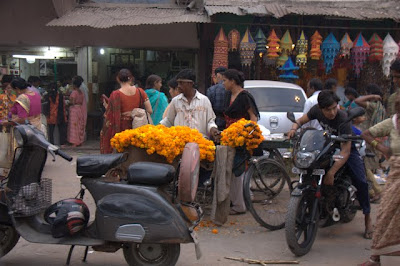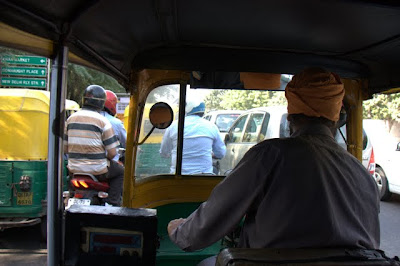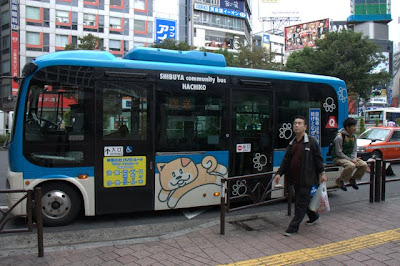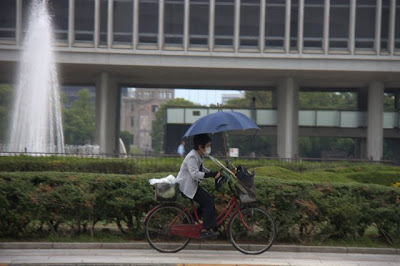Merry Christmas, Thai style!
This is the first Christmas we’ve been away from home, which means it is also the first Christmas we’ve spent in a warm place. Forecast for Chiang Mai for Christmas Day: 86 and sunny. Forecast for Pittsburgh: 29 and snow showers.
Christmas is the one day where we’d rather be in the cold. This year, there’s no Christmas cookies; no decorating the tree; no family get-togethers; no 24 hours of The Christmas Story; and no presents for Fabulous on Christmas morning. Every year, I start the holiday season off by playing my favorite Christmas album, A Very Special Christmas. It is missing from our ITunes collection and I can’t find it on the internet. It’s just not the holidays without the Pointer Sisters pointing out, Whoa! Here we go! Another year gone by!
Yet, this holiday season has not been as different as we would have guessed. We saw Christmas decorations before Halloween. We went Christmas shopping and heard the same Christmas tunes, over and over. We saw lots of twinkling lights and there’s been Christmas trees in the lobbies of most of the places we’ve stayed in December. Santa even knew where to find us, even though we don’t have a chimney and didn’t put cookies and milk out for him and carrots out for Rudolph. Courtesy of Santa, we’re staying in some fancier digs tonight and tomorrow and may even treat ourselves to dinner at a real restaurant that isn’t on the side of the road. We plan to finally watch Bad Santa while lounging on our giant bed with multiple pillows (what luxury!) We even got to watch our first Steelers game of the season today – for the win, nonetheless. Thanks, Santa!

...which we better not get used to because after we leave, we'll be spending 2 days crossing into Laos by boat. I hear it is BYOC (bring your own cushion).
Turns out that even though Thailand is 95% Buddhist, there are signs of Christmas everywhere. Even more so than the occasional Christians or the abundance of ex-pats, I’m guessing that Christmas is popular here because Thais love any type of celebration. Yep, Christmas in Thailand isn’t half bad, even though our thoughts will be in Pittsburgh. We wish everyone, wherever you are in the world, a very Merry Christmas. FedEx has your presents, so you’ll have to just enjoy scenes from the holidays in Thailand instead:
Thais posing in the middle of a giant snow globe in Bangkok; why, I don't know. I don't ask. I just capture.
Chatuchak Weekend Market, Bangkok, where you could get a neon sign wishing folks Merry Christmas or with a man peeing. Your pick.

Presents. More specifically, presents, on a barge, on oil drums, randomly in the middle of the canal in Chiang Mai. Only in Southeast Asia.

Couldn't do the annual Christmas Eve photo in front of Sean's parents' tree, so one taken in the mirror of the lobby of where we stayed for the past three nights on the way out the door will have to do.
Jumping Ahead to the Future
We’ve been in Chiang Mai, Thailand’s second largest city, for over two weeks now. Before we came, I had heard that Chiang Mai is a black hole that sucks you in, but if our travel plans were waylaid, I was assuming it would be for fun things, like hanging out with elephants, cooking, and chatting with monks. We did those things – more on that later – but would have been well on our way to exploring the rest of Northern Thailand or even into Laos if life hadn’t happened.
First, our netbook went completely kaput. It wouldn’t start up, not even in safe mode. Luckily, I have constant tech support by my side. Sean worked his computer magic for a couple of days building a bootable thumb drive, recovering important data we never backed-up (like pictures!), installing a new hard drive, giving Windows the heave-ho and installing Linux, and then fine-tuning everything to make sure it all worked with Linux. Or something like that. The moral of the story is, if you aren’t traveling with your own tech support, or even if you are, back everything up NOW because you never know what is going to happen.
Just as we were about to leave Chiang Mai, spiffed up computer in hand, Sean started running a fever with body aches, culminating in his first hospitalization ever! Turns out he acquired a bacterial infection, probably from something he ate, although for the life of us, we can’t figure out what was the culprit, because nothing seemed amiss. He ended up in Chiang Mai Ram Hospital for two days in order to receive IV antibiotics, officially making our decision to purchase World Nomads’ travel and health insurance a good one. They were very on the ball, and worked with us and the hospital to make sure that he received quality care.

I got in BIG trouble for taking this picture...from Sean, not the nurse. I didn't post the one where I'm being given a very dirty look.
The hospital was World Nomads’ recommendation, and other than all of the medical workers being Thai and the retro nursing hats some of the nurses wore, it could have been a hospital at home. Well, except the part where we had to ride in the back of a pick-up truck to get to the hospital. And the part where there was a blaring rock concert outside the hospital on the first night. Or the part where it was super-efficient and cheap. A couple of days before Sean was admitted, he went to the ER to be checked out. We were in and out in two hours, including getting lab results, and the whole visit, including two prescriptions, was only $45. No wonder people come to Thailand for medical care. The two day stay, which was mostly covered by our insurance, came to a grand total of $900. Sean had his choice of private rooms, which came with cable televisions, a kitchenette, and free wi-fi. Once again, he proved to be too tall for Asia – the nurse had to remove the foot of the bed so he could fit. The moral of this story is, for all of our consternation about eating in India, you never quite know how your food is handled anywhere in the world so eat up and get insurance.
Once Sean was released, we hung around Chiang Mai for a few more days to make sure he was fully recovered. Just as we were ready to head out, we were waylaid for the THIRD time. I’ll spare you the details, but let’s just say FedEx and United States Customs are the grinches that stole Christmas. The sordid tale involves non-responsiveness from FedEx, long aggravating phone calls, 3 hours filling out customs forms, and hundreds of dollars in shipping fees, with the end result being that our Christmas gifts for our families were re-routed back to Bangkok, where we are not. Supposedly the package will end up at the Chiang Mai FedEx tomorrow or the next day for us to deal with, so it looks like its Christmas in Chiang Mai for us. The moral of this story is, shipping stuff home is more trouble than its worth (considering our track record includes this fiasco, stolen shoes from a package sent from Spain, broken pottery in a package sent from Morocco, and a missing sculpture last spotted at the Johannesburg post office in a package sent from South Africa).
Actually, the REAL moral of these stories are life happens…no matter where you are.
p.s. Stay tuned for scenes from Christmas in Thailand tomorrow, then next week, more from India to round out the year.
New Country Day
One of my favorite things about traveling non-stop for an entire year is what we call New Country Day. Even though New Country Days usually involve long uncomfortable bus rides, or overnight trains, or multi-leg flights with time changes, and figuring out logistics like where to stay, how to get around, and where to eat, New Country Days have a level of excitement and anticipation unmatched by any other day. On New Country Day, the whole country lies before you, waiting for exploration.
As much as I enjoy seeing the subtle ways that the cultures of neighboring countries blend into each other when we travel overland, one unique aspect of flying is how it drops you right into a completely different environment. By this point in our trip, we’ve had some pretty big transitions: France to Morocco, Spain to the Czech Republic, Poland to Ireland, Ireland to South Africa, South Africa to Jordan, Jordan to South Korea. And, of course, Japan to India.
You probably couldn’t find two countries who are fundamentally different: Japanese society is predicated on order, and Indian society is predicated on anything but. One of the reasons I think I found India to be so shocking was because we just had spent a month in Japan. Japan was pleasant and enjoyable, but by the end, we were a little bored and itching to move on. And move on we did.
(A note about Delhi’s metro – the picture above doesn’t really reflect what it was like most of the time. I would have loved to have taken a picture in the height of the crowds, but it is a little hard to use your camera when you are being jostled and pushed in all directions. At times, the metro cars are stuffed to the gills, meaning that people have no room to stand and don’t fall down only because they are being held up by the compression of the crowd. When the metro rolls up to the platform, people impatiently waiting for the metro push their way on as people already on the metro push their way off. In the more crowded, popular stations, an attendant tries to keep people in line. Try being the operative word. As you can imagine, as unpleasant as it is for men to ride Delhi’s metro, it can be distressing for women. The first couple of times we rode the metro, I rode with Sean in the general cars, doing my best to shield myself from stares from the men around me with a scarf and sunglasses. Once we started encountering metros that were overflowing, I separated from Sean to ride in the women’s only car. Delhi instituted the women’s only car so women can avoid the physical contact, leering, and groping that can be part and parcel of riding in the general car. Yet I’m not sure that riding in the women’s car was much better. I may not have to stand pressed between sweaty men, but the leering was worse. Inevitably, the overstuffed nature of the men’s car compared to the extra room in the women’s car meant that men overflowed into the front of the women’s car. It often seemed like the most pervy men took advantage of overcrowding to get an unblocked access of a car full of women. Some defiantly strode right into the middle of the women’s car. It is not surprising, I suppose, that things are so bad that a women’s only car is required, that some men don’t follow the rules. At the most crowded stations, enforcers boarded the women’s only car and shouted at the men until they scurried away. Interestingly, all of the enforcers that I saw – the few that there were – were petite women. I didn’t realize until I wrote this post that the women’s only car had only been instituted in the month before our arrival, so perhaps conditions have improved.)
(As a further sidenote, Japan also has women’s only cars, but the restrictions only applied during rush hour. We never saw a need for a separate women’s car firsthand during our subway travels in Japan.)
Impressions of India by a Type-A Personality
India. More than any other place that we have been, and I expect, more than any other place that we will go, India can’t really be described, only experienced. Perhaps that is why I am having so much trouble, now, articulating what India was like. Removed our Indian travels, I feel like I’m being melodramatic when I try to put into words the feelings and emotions I felt while we were there. But I know what I felt, particularly in those early days.
Right off the bat, India was intense, setting off a roller coaster of emotions that never subsided, only lessened as we grew more used to our crazy surroundings and as we traveled south, where India tends to be calmer. In India, I felt shock. I felt crowded. I felt alive, but very aware of my own mortality. I felt amazement. I felt sadness. I felt frustration. I felt disgust. I felt awe. Above all else, I didn’t feel bored. There’s too many layers to India’s chaos to feel bored.
Peeling Back the Layers
For starters, finding clean places to eat and drink, especially on a budget, wasn’t always easy. This was a problem more so in the north than in the south. Most of the cheapie rooms were rather dingy, and most of the time mid-range wouldn’t get you more than the addition of toilet paper. Needless to say, we put our sleep-sacks and travel towels to good use that month. Sometimes, for lack of a better alternative, we’d eat in crowded guidebook recommended restaurants that we’d probably report straight to the health department at home. We wouldn’t even want to touch the grimy menus, let alone eat the food. We ate and slept with swarms of ants in close proximity. Yet the ants were the least of our problems. As long as they wouldn’t actually be on our food – like they were one time when I was eating a candy bar and ants started crawling up my arm – or on us or our stuff – like they were another time when the infestation in our bathroom found their way into our bags – they were just something else I had to force myself to ignore. The cockroaches we’d see scurrying down the street, or most horrifyingly in the bathroom of a boat we rented in Kerala, I refused to get used to.
We’ve seen litter and garbage in other countries, but not like India. We started showering at night to rid ourselves of the day’s grime. In Delhi, in particular, the air was so thick with smog and pollution that it felt as if we were breathing whole particles, and in fact we were. I’d blow my nose and the tissue would be black, much like when Sean’s would be when he was demolishing 110-year-old smooty plaster in our old house. Only all I did was walk down a street. I bought a scarf whose most useful function was covering my nose and mouth as we zipped through exhaust clouds in rickshaws. My eyes were so irritated that I couldn’t wear my contacts for a week.
Venturing Outside
Being outside for any appreciable length of time wore your nerves down. Walking down the road is like navigating an obstacle course. One has to avoid things like protruding slabs of concrete, if a sidewalk exists at all; puddles of standing water; piles of trash; fires; dog shit; cow shit; people walking; people sleeping; people urinating; sidewalk vendors; down wires; piles of rubble; emancipated cows; and mangy, stray dogs. Horns are a constant sound in an overcrowded nation with little patience. Indian drivers use them as a you-better-get-the-hell-out-of-my-way-because-here-I-come warning and it seems they are continually coming. I got so fed up with the sound of horns that it drove me to seriously consider offering more to a rickshaw driver if he could manage to transport us from point A to B without use of his horn.
Every time we got in a taxi or rickshaw (basically a glorified go-cart) I feared for our lives. It is almost as if everything is operating on imaginary rails. I had no other way to explain how there are not more accidents in India, or how the chaos just functions the way that it does. We’ve seen countries where the lanes are just suggestions before, but India takes it to a whole new level. Rickshaws, taxis, cars, trucks, buses, cows, and pedestrians, all jockeying for a spot in the road at the same time, all sliding past each other with inches to spare.
1.3 Billion People
People often say India is “teeming with humanity.” I’m not sure what that means, but if it means that there are a lot of people everywhere, then it is a proper description. Not only are there a lot of people everywhere, there are a lot of people living their lives in public. Eating in public. Sleeping in public. Bathing in public. Laundering in public. Urinating in public. Hell, even dying in public. All of which is a bit overwhelming to people, like us, from countries where privacy is a zealously guarded right, where people live much of their lives behind closed doors.
Personal space simply doesn’t exist in India. The country is filled to capacity and then some. People overflow out of trains, subways, buses, cars, rickshaws, motorbikes. Signs admonishing people to stand in a queue are ignored. To protect your territory while you wait, pushing and shoving is required. Just when you thought you’d made it to a counter, still people cut in from the side. One day I got so fed up, I heard myself saying, Excuse me, sir, but I was next in line. I don’t know why. I knew it was futile. We have to adapt to their customs and norms. They don’t have to adapt to ours.
Not only do you not have any actual personal space in public, you also don’t have any mental personal space. Between the honking, the traffic, and the crowds, there’s not a lot of room to think. There’s always people, so many people. And a lot of them want something from you. There has been begging in every single country we have visited, but nothing like India. A man with his legs permanently disfigured into a cross-legged position, crawling around on his hands, thumping on your table for your attention. A woman with a child, both with tears streaming down their faces, tapping the window of your cab, pleading with you, over and over, to spare her some change. Then there’s the touts and the scammers, with schemes so elaborate that I couldn’t always even figure out exactly how they were trying to get us to part with our money. We actually found the touts to be more aggressive in Morocco, but damned if they are not persistent in India. Rickshaw drivers would follow us down the block, long after we said no. Conversations that started off so innocently – where are you from? – usually led to no good. Even those people who weren’t trying to take advantage of us often gave us misinformation, not because they were trying to mislead us, but because they don’t want to admit they don’t know.
The worst way that India got into your head was the staring. It didn’t happen everywhere – the non-touristy areas were usually worse – but when it happened, there was no ignoring it. When metros rolled up in Delhi, stuffed to the gills with men, except for the last car, which was slightly less stuffed with women, everyone’s eyes turned to us. When we’d walk down the street in certain areas, we’d pass a group of men, and I’d feel their eyes bore down on me, and if I dared turn around when they had passed, I would see at least one of them, looking over his shoulder. When I’d use our computer in an airport, or on a ferry, a little boy would stand right next to me, watching every word that I typed. When we and a newfound Irish friend waited for a train in a small-town railway station, every single person in the station watched our every move, even going so far as to completely turn around and hang over the back of their seats to get a better view. Meanwhile, a pig strolled through the station, and no one – except us of course – gave the pig so much as a glance.
Down the Rabbit Hole
And that’s India for you – there’s madness all around, but no one notices but you. Not Indians, not even most of the other travelers around. This is what starts to play head games with you. I had trouble picturing any of our Indian friends, who seemed so mild-mannered and calm, here in the middle of the chaos. Sean kept reminding me that for the Indians at least, this was their norm. This is where they grew up, so nothing is out of the ordinary.
That’s what I could never get past. We met a really nice guy on the train from Delhi to Agra, one of the few middle-class Indians with whom we had an opportunity to interact. He was going home for Diwali. It was our first Indian train ride. He told us he lived in the United States for a while, but returned to India. We asked him why. He replied, its boring in the United States! During the train ride, he pulled out his laptop, with his countrywide 3G data plan. He showed us the website of the company he worked for, a sort of Indian Yelp, which reviewed restaurants in the big cities. As he sat, talking about good Italian places in Mumbai, I was only half-listening. I kept staring out the window, at the garbage, at the men urinating on the tracks, at the shacks lining the tracks, at the scrawny women working in the fields, at the people jumping on the trains as they rumbled by. To him, it was as if none of these things existed.
India made me feel like Alice, like I tumbled down a big, long rabbit hole. The only thing that was out of the ordinary in India was me. Everyone and everything else fit together, its own functional dysfunction. I’d be the first to admit that I’m too uptight for India. India made me anxious. The only thing you can expect is the unexpected, and you always need to stay on your toes. I’d feel exhilarated one moment, only to come crashing down the next.
I can see why India harbors people of so many faiths. It takes devout spirituality, belief in higher powers, suspension of disbelief. India is no place for realists or cynics. The gems are definitely there, but you have to dig for them.
All of this makes it sound like I hated India. While I may have said that a time or two while we were there, I didn’t really mean it. While I was there, I let frustration overwhelm me. Removed from India’s chaos, I can appreciate the time I spent there, the good and bad. We saw hauntingly beautiful things, met kind people, ate fantastic food, and learned a lot about this country, which is only going to increase in prevalence on the world scene in the years to come. More than anything else, I can’t recall another time in my life when I was filled so full with constant fascination.
How Bizarre
How bizarre became my favorite phrase upon arrival to Asia. I didn’t even notice how often I was using it until our friend Kevin made fun of me while we were in South Korea. But there is just no other way to describe Asia, especially Japan. On the one hand, it is just like home, except the people are Japanese. On the other hand, it is nothing like home. Consider the following oddities I noted throughout our month in Japan:
- For the first week in Japan, it was impossible to get Domo Arigato, Mr. Roboto out of my head, resulting in a constant soundtrack to our travels through Fukuoka and Hiroshima. Once, a Japanese man caught me singing, domo, domo under my breath and gave me a really strange look. Okay, this probably makes me bizarre, not Japan. Moving on…
- The buses in Fukuoka and Hiroshima shut off at every intersection, leaving an eerie silence every couple of minutes (except for the sounds of Styx running through my head).
- We were given 10 minutes of instructions about how to watch a parade, but were able to roam freely with monkeys with no instructions other than to not look them in the eye.
- Japan has tons of no-smoking zones in outdoor places like parks and public streets, but most of its restaurants and hotels are full of smoke.
- It was always a crap shoot upon entering a bathroom stall whether you’d find a super modern toilet with buttons for fake flushing noises to cover embarrassing sounds, buttons for sprays of water at different angles, a heated toilet seat, and in some cases, a seat that automatically lifts, or a primitive squat toilet that was essentially a hole in the ground with a flushing mechanism. I would have settled for a consistent happy medium of regular, non-electronic toilets, but when it comes to Japanese toilets, it is all or nothing.
- Speaking of bathrooms, there were never any paper towels, leaving me to wipe my hands on my pants while the Japanese women daintily wiped their hands on their personal washcloths they carried around in their purses.
- People line up in orderly queues and wait to board the metro until everyone has gotten off.
- Ice cream comes in green tea matcha and wasabi, not vanilla and chocolate.
- The Japanese women are obsessed with their skin, but I couldn’t find a face moisturizer or lotion to save my life. There’s whitening creams galore, and even something known as face milk, but anything marked as a lotion actually was straight liquid.
- Kids either go to school on Saturdays, or like wearing their uniforms on the weekends. (I’m guessing the former). I’ve never seen so many school kids in uniforms in my whole life. Young school children are forced to wear matching hats (which is adorable, by the way). Japanese school girls wear super short skirts, knee socks and penny loafers (which I’m told, by a friend of my mom’s living in Japan, is only because they hike them up after school).
- The Japanese like things to be at the ready with just a flick of some yen, should the need arise. Need rice? Japan’s got you covered. Milk or eggs? No problem. Batteries? Sure. Want something to read? Buy a book! Drinks? Of course.
- But don’t think about carrying that drink with you, or you’ll be carrying it around all day. Everyone who visits Japan notices the glaring absence of trash cans, but also litter. This is because the Japanese do not walk and drink; they consume their beverage next to the vending machine then throw it away.
- You can name a drink Pocari Sweat and people actually drink it, including us. (Tastes like grapefruit gatarade).
- The Japanese have an obsession with the floor and shoe removal that I just do not share. They sleep on the floor, eat on the floor, and insist upon removing their shoes at every entrance. This resulted in smelly shoe racks at the entrance to every hostel. Plus it also begs the question: is it more disgusting to walk without shoes in a bathroom, or wear the shared bathroom slippers? We saw just how deeply entrenched these customs are in Japanese society. At the end of our trip, when the weather grew cooler, homeless people moved into cardboard box “houses” inside the subway stations. Outside each box was a pair of shoes, lined up and tidy.
- In our month in Japan, I felt like I was in the middle of a giant Nintendo game. There are beeps and boops all over the place, and all signs feature cutesy characters, even if they are trying to tell you what to do.
- I think I’m turning Japanese, I think I’m turning Japanese, I really think so. In India, way out of context, I found myself bowing my head ever so slightly in gratitude and politeness.

Even their nudie bars have cutesy signs (that are bizarre in of themselves - I'm not sure what is going on with this bra-wearing, nose-pierced, patriotic fish/cow).
It is discovering the little, random observations, like these, that I love the most about traveling.









